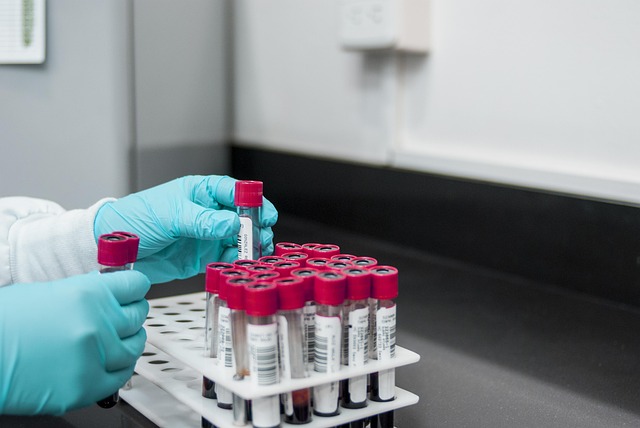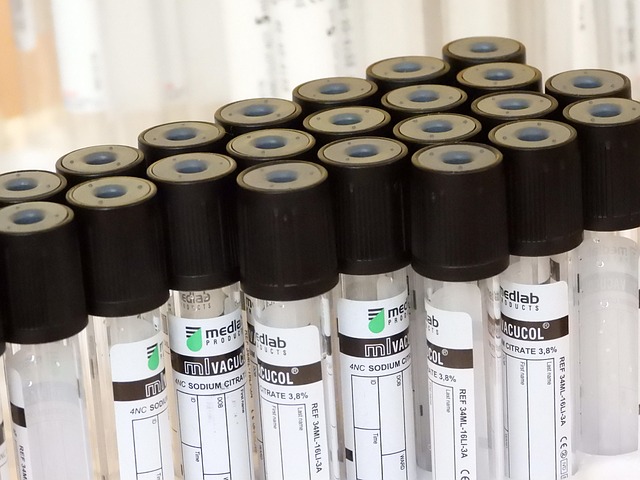Ferritin, the 'iron keeper' protein, is crucial for diagnosing iron disorders in the UK. A simple Testosterone Blood Test UK, combined with ferritin level testing, offers a comprehensive view of iron status. Low ferritin levels indicate deficiency and potential anaemia, while high levels suggest excess iron accumulation. Accurate diagnosis enables tailored treatment plans addressing iron-related conditions.
In the UK, iron deficiency is a common health concern, but accurate diagnosis is key to effective treatment. Here, we explore ferritin level testing as a powerful tool in identifying iron deficiency anaemia. Understanding ferritin, a protein storing iron in the body, offers insights into overall iron status. This non-invasive blood test provides a straightforward method for healthcare professionals to assess and diagnose iron deficiency, ensuring tailored treatment plans for those across all demographics.
- Understanding Ferritin: The Key to Iron Diagnosis
- Why Choose Ferritin Level Testing?
- Interpreting Results: Unlocking Iron Deficiency Secrets
Understanding Ferritin: The Key to Iron Diagnosis

Ferritin, a protein that stores and releases iron as needed by the body, plays a pivotal role in iron diagnosis. Often referred to as the ‘iron keeper’, ferritin levels reflect the amount of iron available for use in various bodily functions. A simple testosterone blood test UK can provide valuable insights into an individual’s overall health, including their potential iron status. When ferritin levels are low, it indicates a depletion of stored iron, which can lead to iron deficiency and anaemia. Conversely, high ferritin levels suggest excessive iron accumulation, which may be benign or indicative of conditions like haemochromatosis. Understanding these dynamics is crucial for healthcare professionals in accurately diagnosing and managing iron-related disorders.
Why Choose Ferritin Level Testing?

Ferritin level testing is a crucial step in diagnosing Iron Deficiency, offering a targeted approach to understanding an individual’s iron status. Unlike traditional methods that primarily rely on haemoglobin measurements, ferritin level analysis provides a more comprehensive view. Ferritin, a protein that stores and releases iron as needed, serves as an indicator of both iron reserves and recent iron intake.
For accurate assessment, healthcare professionals in the UK often recommend this test alongside a testosterone blood test, as iron deficiency can impact various hormonal systems. By examining ferritin levels, doctors can identify individuals with low iron stores or inefficient iron utilisation, enabling tailored treatment plans to address Iron Deficiency effectively.
Interpreting Results: Unlocking Iron Deficiency Secrets

Interpreting your ferritin level results is a crucial step in understanding your iron deficiency status. Ferritin, a protein that stores and transports iron in the body, is measured through a simple blood test. Normal ferritin levels indicate sufficient iron reserves, while low levels can suggest iron deficiency. In the UK, a testosterone blood test might be recommended alongside to rule out hormonal imbalances that could also cause similar symptoms.
If your ferritin levels are below 20-30 micrograms per litre (mcg/L), it’s likely indicative of iron deficiency anaemia. This range varies slightly between different laboratories and healthcare providers, so always discuss the specific reference ranges with your doctor. Once diagnosed, addressing the underlying cause—whether through dietary changes, iron supplements, or medical treatment—can help restore ferritin levels and alleviate symptoms associated with iron deficiency.
Ferritin level testing offers a valuable tool in diagnosing iron deficiency, providing insights into an individual’s iron storage capacity. By understanding ferritin and its role, healthcare professionals can make accurate diagnoses, leading to effective treatment options. This simple blood test, similar to a testosterone blood test UK, allows for early identification of iron deficiencies, ensuring folks receive the necessary care promptly. With proper interpretation, it can revolutionise how we navigate and manage iron-related health issues.
